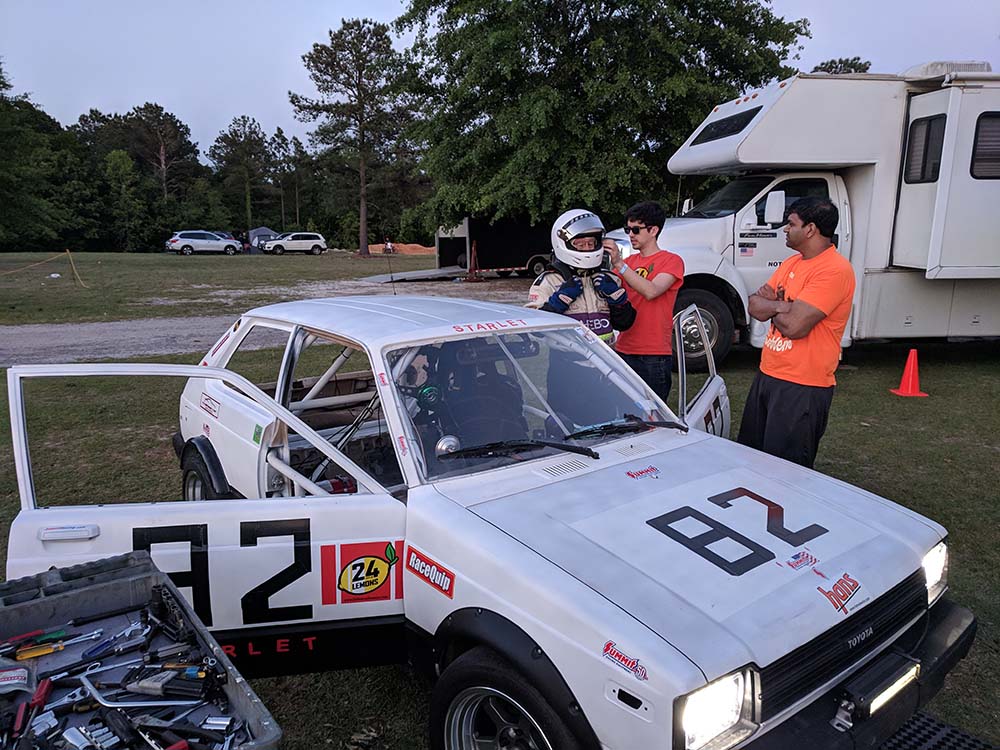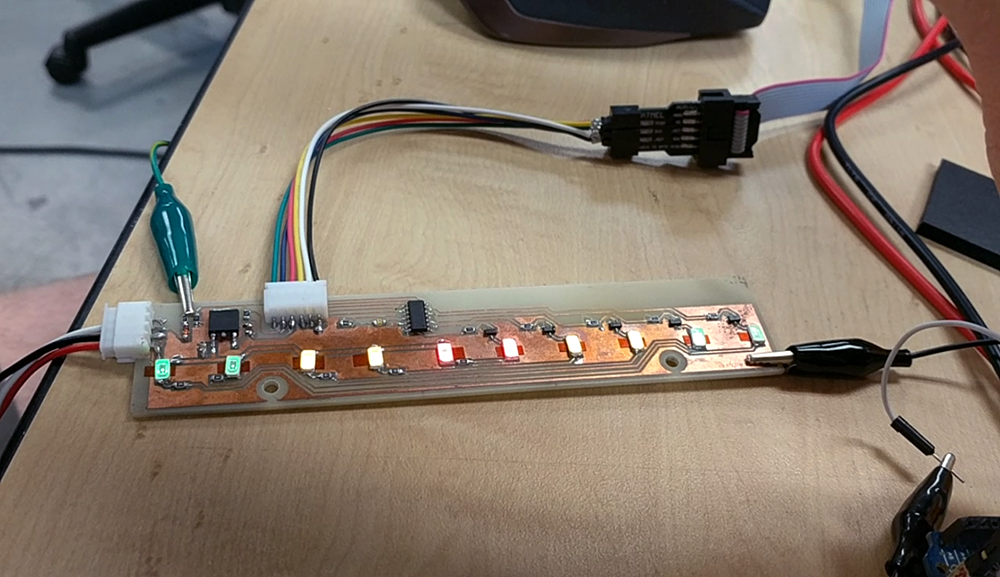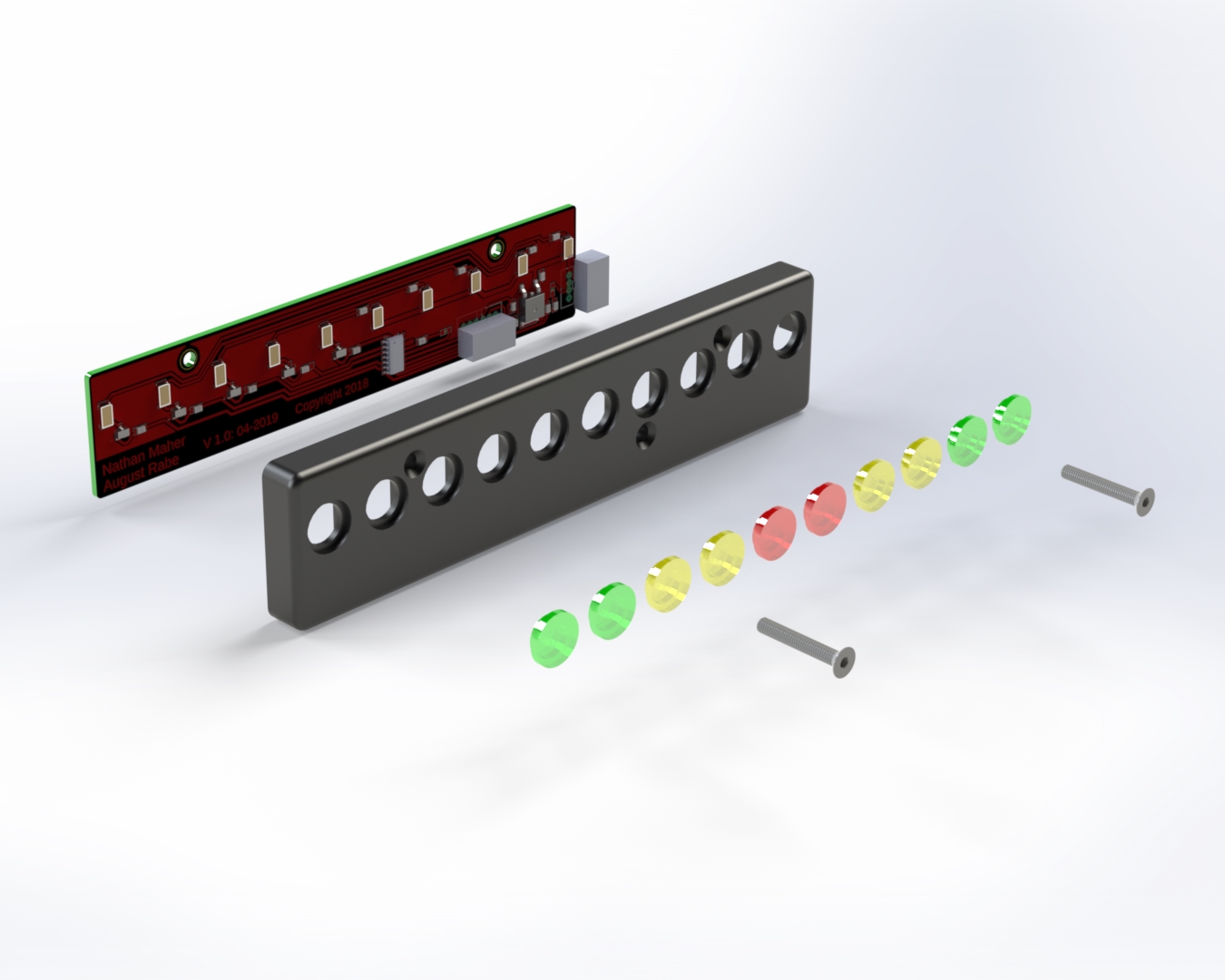It turns out that I have gained a bit of a reputation for making many odd electrical and
mechanical
devices. One day a friend of mine asked for help making a shift light for his racecar. He ended up
introducing
me to the world of 24 Hour Lemons racing. For those not familiar, these races are 24 hour continuous
endurance
races in cars that are not allowed to cost more than $500. The goal is to keep money out of the
sport, which
helps level the playing field, make racing accessible to just about anyone, and makes it less about
winning,
and more about camaradery and having fun. Their racecar is pictured below - a 1982 Toyota Starlet.

My friend and his race team had an upcoming race that would take place truly over 24 hours, all
through the night.
The problem was that their dashboard was unlit. He asked me to make a shift light that would take in
the tachometer signal
and display green, yellow, red, or flashing lights depending upon the engine RPM.

I wanted it to be small, so I challenged myself to use entirely surface mount components on a
completely
homemade PCB. I ended up using some cheap high power SMD LEDs from China, and an ATtiny series
microcontroller
from my massive stockpile of ICs.

The design and build itself was fairly straightforward. What was challenging was the software. His
car was a few
hours away, and he needed this shift light done in only a few weeks when the race would take place.
This meant that
I had to get the electronics and the software working completely without ever testing it in the car.
This didn't quite
work out. I actually ended up traveling with him to watch the race. So I was able to tweak and test it just
hours before they
took it on the track. It ended up working extremely well, including a dimming feature based upon the
ambient light.
Below you can see a quick video of me testing it just hours before the race.